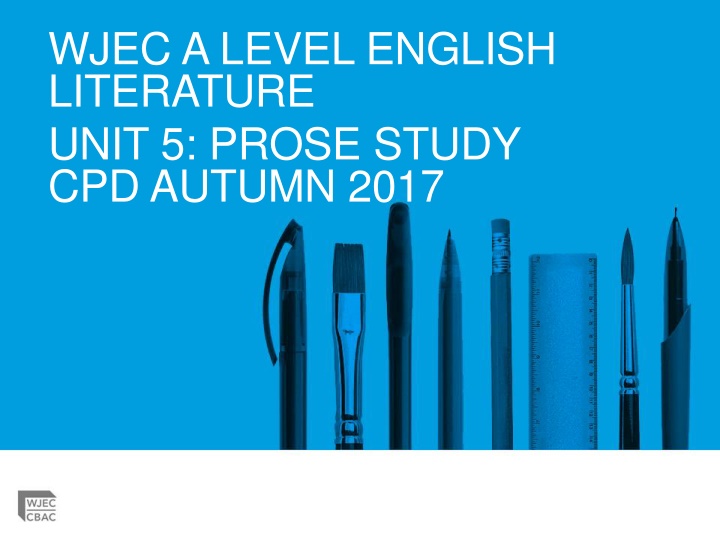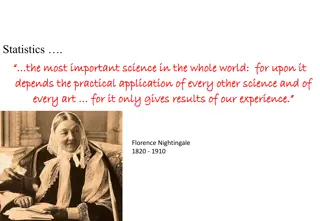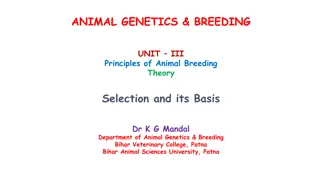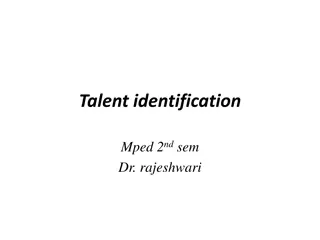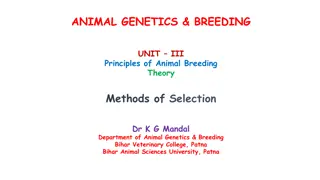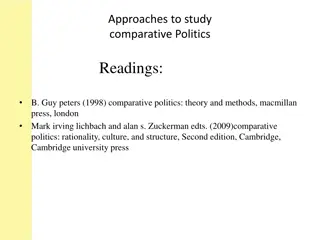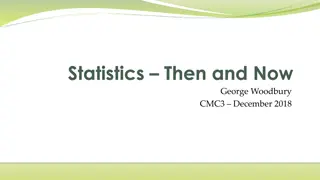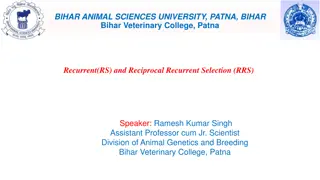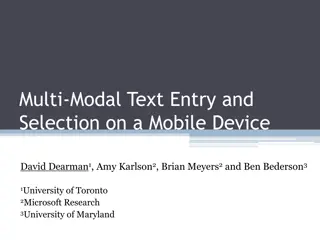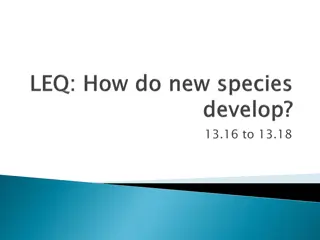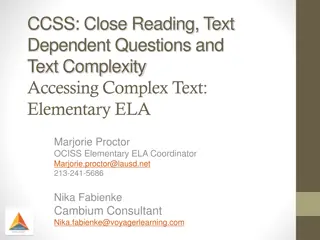Success Factors in Text Selection and Teaching Approaches
When choosing texts for English literature study, factors like text selection, pairing, teaching approaches, task setting, and assessment procedures play a crucial role in ensuring success. Reviewing departmental decisions is vital in determining when and how to start, level of independence to allow, and support for study skills. Best practices involve selecting texts for literary merit, avoiding pitfalls in pairings, and ensuring a wide range of topics. Teaching approaches focus on candidate independence, advising on topics and titles, and supporting study skills through various techniques.
Download Presentation

Please find below an Image/Link to download the presentation.
The content on the website is provided AS IS for your information and personal use only. It may not be sold, licensed, or shared on other websites without obtaining consent from the author.If you encounter any issues during the download, it is possible that the publisher has removed the file from their server.
You are allowed to download the files provided on this website for personal or commercial use, subject to the condition that they are used lawfully. All files are the property of their respective owners.
The content on the website is provided AS IS for your information and personal use only. It may not be sold, licensed, or shared on other websites without obtaining consent from the author.
E N D
Presentation Transcript
WJEC A LEVEL ENGLISH LITERATURE UNIT 5: PROSE STUDY CPD AUTUMN 2017
Important factors in success Text selection and pairing Teaching approaches Task setting and wording of titles Assessment procedures
Reviewing Departmental Decisions When and how to start How much independence to allow How to instil study skills How to support planning, drafting and redrafting
Best Practice Choose texts for literary merit rather than accessibility or single linking theme/idea Avoid pairing texts which are too similar or too different Ensure combination allows for wide range of topics available Keep possible pitfalls in mind in generic pairings: dystopian; gothic; reportage
Teaching Approaches Can candidates deal with level of independence? Which texts to offer? How to advise on topic and precise wording of title? How to support study skills: re-reading; prose technique; research and productive use of internet Free choice of both texts Pre- or post-2000 text? How many texts to offer for pairing? Ensuring sufficient range of topics for independence How to help candidates avoid favouring taught text Teach one core text Ensuring chosen texts allow for range of topics and titles Avoiding reductive single focus approach How to inject opportunities for independence Teach both texts
Teaching Approaches Teaching one core text: ensuring range of topics Alien Outsider Importance of place/setting Unreliable narrator Wide Sargasso Sea Patriarchy Female Unheroic hero Repression Sexuality Entrapment Slavery Race
Teaching Approaches Teaching one core text: selecting range of Post- 2000 texts The Line of Beauty Snowdrops White Tiger Brick Lane The Little Stranger White Teeth The Blind Assassin The Road Home Wide Sargasso Sea A Brooklyn Temporary Gentleman The Secret Scripture The Sense of an Ending On Chesil Beach The Long Song Property Small Island
Teaching Approaches Teaching both texts: ensuring range of topics to inject opportunities for independence The role of the suitor Female protagonists Suitable? Unsuitable? Biddable? Importance of place/setting Sympathetic Repressed? Rebellious? Home Sympathetic? Alien world Contrasts Journeys Pre-2000: A Room with a View Only connect : Barriers Literal Metaphorical Social; racial; gender; communication; religious Post-2000: Brooklyn Coming of age Church Comic minor characters Influence Serious intention/importance Satire Clerics/buildings
Teaching Approaches (1) Draft wording of task Teacher advises on wording Teacher advises on structure/content (2) A4 page plan/outline Teacher advises on expression/style and literary focus (AO1; AO2) (3) Opening/sample paragraph(s) (4) First draft Perhaps highlighting AOs to gauge coverage/balance? Self/Peer assessment (5) Draft for teacher s constructive guidance
Task-setting Unsuccessful task Successful task Clear and accessible to candidate x Overly complex with surface sophistication Manageable and precisely defined focus x Focus too wide-ranging x Vague and open-ended Emphasises literary response x No clear literary focus Helps candidate structure an argument x No case to argue x Foregrounding context rather than literary appreciation Keeps context in proper place
Task-setting Analyse how the context of the societies in which the novels are set affects the characters in Dracula and Fingersmith. Compare and contrast the ways in which the writers present the characters as defined by the world in which they live in Dracula and Fingersmith. In exposing the thin line between good and evil, the writers present characters mired in a dense and murky world of corruption. With this view in mind, compare and contrast the ways in Stoker and Waters use setting and characterisation to explore the nature of evil in Dracula and Fingersmith.
Assessment Best Practice Discuss as team and ensure clear understanding of criteria and key descriptors: clear v sound v sophisticated Annotate in detail noting strengths and weaknesses Assess and indicate level achieved at key points: AO marker + descriptor e.g. AO2 sound Fine-tune mark within the band rather than pushing to the top Make internal standardisation process as robust as possible: dual marking; dialogue between markers Fine-tuning for accuracy AO3: Band 4 23-24 marks All criteria safely met. Pushing Band 5 High 21 22 marks Most criteria met. Safely within Band 4 Mid 19 20 marks Some criteria met. Just exceeding Band 3 Low
Assessment Fine-tuning within the band: AO3 Forster suggests that class boundaries ensure outsiders can never fully escape the abyss of poverty. In a novel in which three classes clash (the moneyed Imperialists, the intellectual middle class and the brow- beaten lower middle class), aspiring bank clerk Leonard Bast represents the clearest outsider in the English class hierarchy. Forster uses Bast as a symbol of the aspirations of the lower classes, reflecting the clear but problematic barriers between the classes. Leonard s devotion to be perceived as an insider is illustrated by his belief in and desire for culture. He attends the Music and Meaning Beethoven concert and reads Stones of Venice by Ruskin, a Victorian art critic who hoped that working men would be empowered through education and who also write Fors Clavigera, letters to working men encouraging self -improvement reflecting Leonard s hope of bettering himself. Low, Mid or High Band 4? Sound, secure appreciation and understanding of the significance and influence of contexts Sound, secure analysis of the contexts in which the texts are written and received Sound, secure understanding of the connections between texts and contexts.
Summary of Advice Review approaches to text-selection and task-setting, using available advice (see CPD materials on the WJEC secure website). Considerhow much independence is appropriate for candidates and how best to support their study of prose technique. Candidates should start reading and preparing for this component as soon as possible in Year 12 Emphasis should be placed on reading and studying the texts in some detail rather than over-reliance on web-based study sites. Primary markers should consult all available guidance on standardising before assessing their own candidates work. Review internal moderation procedures to ensure that the centre s standards are accurate and consistent.
